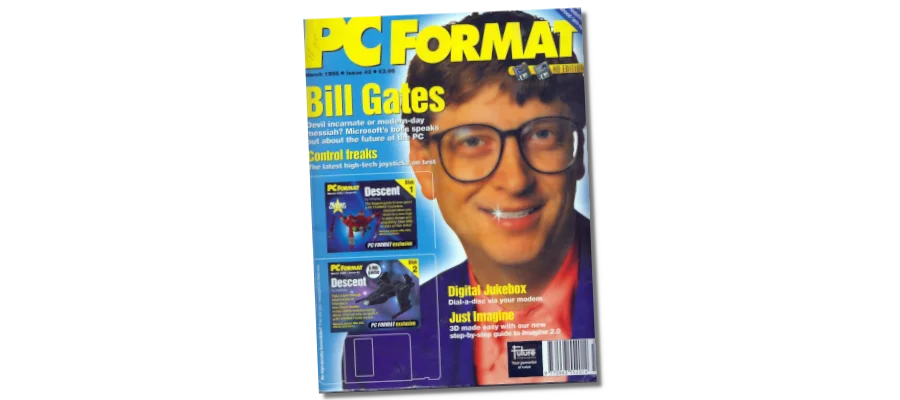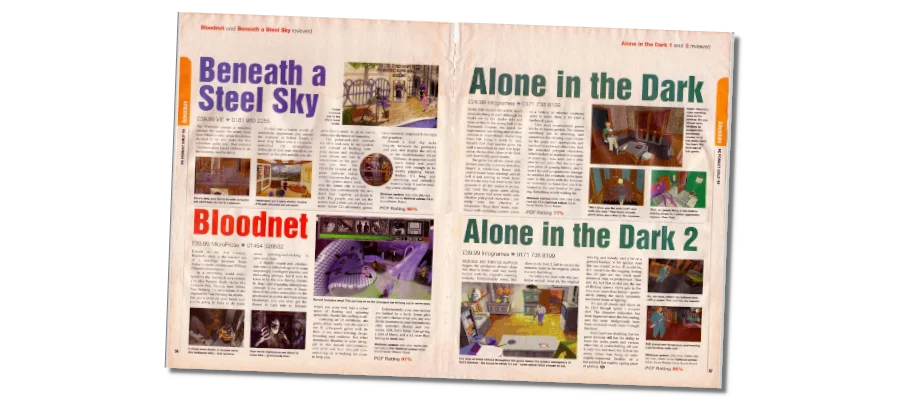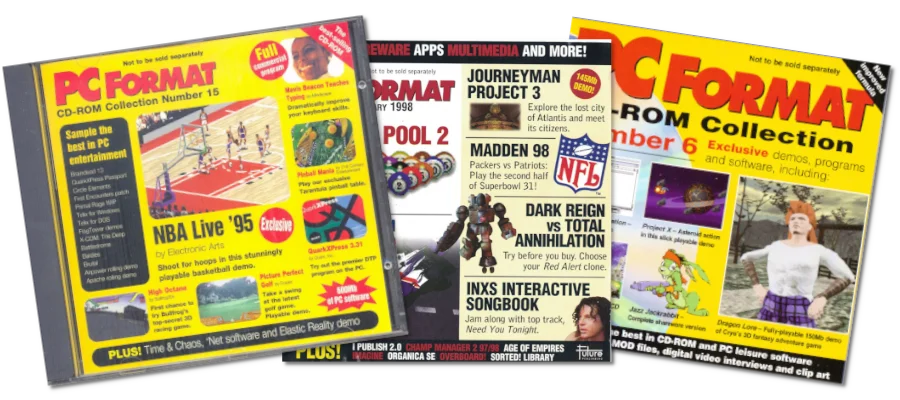Hey, c’mere, I wanna show you something.

This is a cover from the mid-90s run of a magazine called PC Format. I’ve mentioned PC Format in the past, as a magazine that had a particular ethical framework for its reviews. The basic idea was that PC Format was a magazine that only reviewed completed products that they purchased themselves off the shelf of their videogame stores.
The PC gaming market of the 90s was a kind of strange place in hindsight because all the same practices of review culture that are commonplace now were happening then, in a sort of turbo-charged way. People were expected to do reviews quickly, but also, the games just sometimes didn’t… work? Getting a game to work at all on the platform was a lot harder, support was rarer, and sometimes if things went wrong… that was it. You just had to deal with it. Reviewers would in this state, sometimes go to the company in question, on a computer they had set up, and play the game for a predetermined amount of time, with company representatives nearby, and talk to them about the game before writing their review.
That meant that a lot of games with sometimes amazing bugs got through to the market pre-loaded with review scores that spoke of their excellence. I normally mention Rise of the Robots as an example, where that game’s review scores from people who played a preview copy never mentioned that the fighting game couldn’t let the player character turn around.
What PC Format did instead was host a very technically minded group of people on a large number of different PCs that could run a wide variety of games, and played only commercial releases they paid for. This level of rigorous scrutiny for games meant that they were often late to the discourse, but they were so much more reliable, prone to commenting on when a game was absolute horse elbows compared to the way it was being described elsewhere. They’d talk about when a game’s performance impacted its play experience, and they’d even include, in larger articles, contrasting viewpoints from other members of the staff responding to that very article. When I was reading this article, I remember a review of Doom 2, a game I undeniably love, glowingly praising the way it played and flowed, and then a little insert from Paul Pettingale, curmudgeonly tech support guy, pointing out that it adds one weapon and a bunch of enemies – the game is not meaningfully changed by anything added to it.

Which was true.
And also interesting to see someone willing to say in an ad-supported magazine.
Did you know that archive.org has all these issues of the magazine? It’s a bit of a trick to find them — the archive is definitely more interested in preserving the Demo CDs. But the magazines have been scanned and uploaded so, if you want, you can go back and read them. There’s no reason for you to do so, not really. It’s a gem of time, a strange little shard of how people were looking at the future, at the internet, and yes, at videogames. There are passages in this magazine that I read that got me onto usenet, when the time came, or taught me how to edit text files and hex values.
And it also, I have to admit, taught me how to write.
Going back and rereading these magazine issues shows me all these inflections and the ways I tell jokes, in text, and the places they started. Things I amplified, things I wound up taking in their own direction, but which are all positioned with the same, simple, fundamental pedagogical voice. I write like I’m talking to you, and I write that way because that’s how I read these magazine articles doing. Richard Pelley, Paul Pettingale, Ed … Ed…
Shit, I can’t remember Ed’s surname. They used to put him facing across from Paul Pettingale in the tech support colums. I could go check but it feels more true to the experience of hearing me talk to you to include this, and this is all while I try to find a way to wedge in that Richard Longhurst, one of the editors, went on to found the company lovehoney, which you may know as a sex toy store.

One of the cover CDs carries One Must Fall, and a program called Winimages Morph. You could use Winimages Morph in Windows 3.1 to make a step-by-step multi-stage animation in .gif format of an image morphing into another image. That transformation sequence you could then arrange together, very easily in a sort of descending transformation and…
… yes.
Make your own Animorphs covers.
I remember using it for that. I remember using it to make Animorphs images that I shared on the Chee Database, which connected me to people I didn’t, at that point, know, and made a bunch of friends that became really important to whole new dimensions of my life, and it’s just here, as a little bit of free software to move a magazine.
I had a little meltdown when I read these pages again. I sat and read phrases and realised I was making these jokes, all of these jokes and structures that I thought I’d stolen from Yahtzee only to realise that both of us probably stole them from big ginge James Binns. Staring down into this hole of history and realising that yes, on the one hand, wow, these magazines meant so much to me, they helped shape me, and they developed me as an author, but also oh no. There’s so little of me. There’s so little me to me, I’m just copying the things I saw growing up. Everything about me is just a pile of purchases and traumas that have been coagulated into a puddle that I then get to carry forwards. Stolen jokes and badly photocopied ideas and rhetorical strata that’s really just trying to win arguments I lost twenty years ago,
What I’m saying is that, <Foucault Voice> nostalgia is a prison,